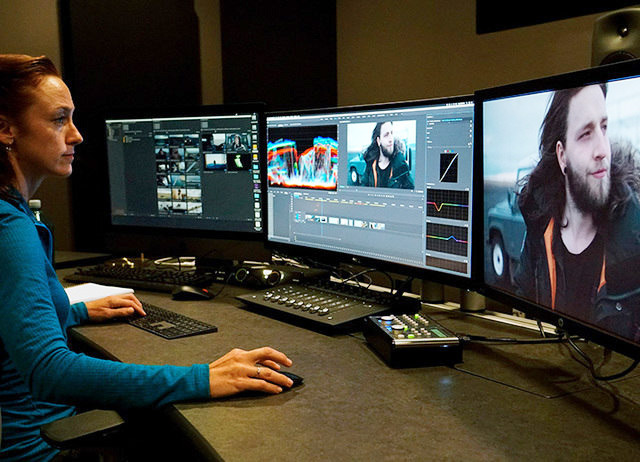Adobe fixes Premiere Pro bug that blew out some MacBook Pro speakers
Adobe has issued an update for Premiere Pro, its video editing suite, solving a glitch that in some cases destroyed the internal speakers of MacBook Pros.

The update, 13.0.3, is being pushed out through Adobe's Creative Cloud service. "Fixed issues with Premiere Pro that reduce noise interaction and help minimize possible impact," release notes say.
MacBook Pro users impacted by the bug would suddenly hear loud and distorted audio, often when they were working on a video's soundtrack. Though the company suggested disabling mic input as a possible workaround, at least some users continued to encounter trouble -- potentially at high expense.
Adobe alerted customers to an impending update earlier this week, saying that it was "aware" of the bug and "working on a solution that will help users mitigate risk."
The company hasn't indicated, however, if it will be willing to compensate people with damaged MacBooks, whether they've already paid for repairs or not.
Late last year Adobe was hit with a $5 million lawsuit from a Premiere Pro user whose video library was wiped when he simply wanted to clear his cache.

The update, 13.0.3, is being pushed out through Adobe's Creative Cloud service. "Fixed issues with Premiere Pro that reduce noise interaction and help minimize possible impact," release notes say.
MacBook Pro users impacted by the bug would suddenly hear loud and distorted audio, often when they were working on a video's soundtrack. Though the company suggested disabling mic input as a possible workaround, at least some users continued to encounter trouble -- potentially at high expense.
Adobe alerted customers to an impending update earlier this week, saying that it was "aware" of the bug and "working on a solution that will help users mitigate risk."
The company hasn't indicated, however, if it will be willing to compensate people with damaged MacBooks, whether they've already paid for repairs or not.
Late last year Adobe was hit with a $5 million lawsuit from a Premiere Pro user whose video library was wiped when he simply wanted to clear his cache.

Comments
The amplifier circuitry that drives the speakers should have had some sort of protection built in to limit the maximum amount of power that could be sent to the speakers.
However, I’m not sure what the fine print of the EULA says. I’d be surprised if they wouldn’t have some CYA passages in it to this effect.
Undoubtly, as a token of excellent customer service, Apple and Adobe might - separately or jointly - nite the bullet and comepansate affected users.
It is standard practice in the electronics industry to put protections in place for any component that could possibly be damaged by some unforeseen issue.
We have current and temperature protections for lithium batteries/charging circuits, current limiting for LED lights, thermal throttling for processors and so on. Apple is usually on top of things, but this time they made a mistake.
If you let your hair dryer run for hours and hours until the thermal fuse (which is in cheaper models not reversible nor replaceable) goes bing and the dryer stops functioning - whose fault is it? It all comes down to the design which is based on intended use and conditions.
Usually, this already comprises (ot at least should comprise) a good level of robustness - even when something happens beyond this intended working window. You remember “hard disk music” applications back in the 90s (?): https://m.youtube.com/watch?v=jEzXjJN1RH0
i don’t think you’d have any luck suing the computer manufacturer for killing your drives in this - though entertaining - way.
This was obviously an oversight by Apple, they put an amplifier in the Mac which was more powerful than the speakers could handle, and they didn't limit its output in either hardware or software.
There is also DaVinci Resolve which is free, so there are options for people.
This is not Apple's problem. Trying to make it so is like saying car manufacturers' fault for not protecting drivers and passengers involved train crashes.
While it's certainly possible to blow a speaker by overpowering it, the vast majority of speaker failures are caused by inadequate amplifiers. Pushing an amp to its limit causes clipping, which is a distortion of the waveform that makes it resemble a square wave. That can destroy a transducer even when delivered at less than the speaker's rated power handling.
On the other hand, most speakers can handle more than their rated power when it's only in short bursts. Thus a few moments of too much power is generally less likely to damage a speaker than running an amp too hard for a more prolonged period.
That means a power limiting circuit will not prevent the most common form of speaker failure. In the '90s there was a running joke about how a fast acting tweeter will protect the fuse every time. That's because what caused the tweeter to fail was not overpowering, so the fuse was pointless.
What's happening in the Premiere case is probably a full-scale square wave. The actual culprit is the square wave, not the amount of power per se, but by delivering that square wave at full power the failure is accelerated.
That's why, despite the Premiere issue, I don't want a power-limiting circuit in my audio path. I want the amp to pass transients unaffected, rather than "pumping" the volume on every harmless short-term peak. Since a limiter circuit wouldn't do much good anyway, the trade-off in intrusive, audible effects isn't worth it.